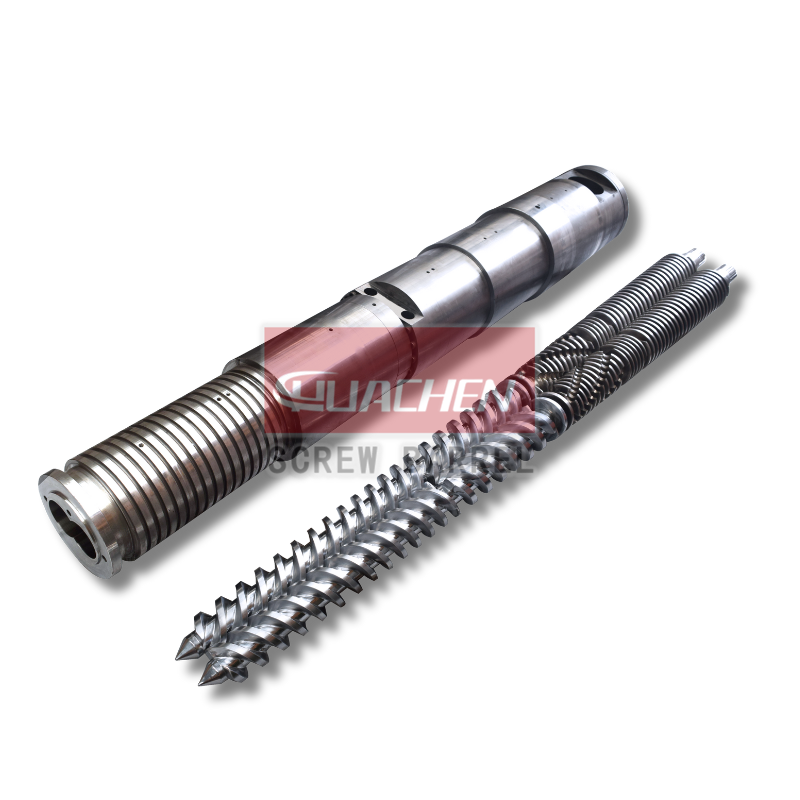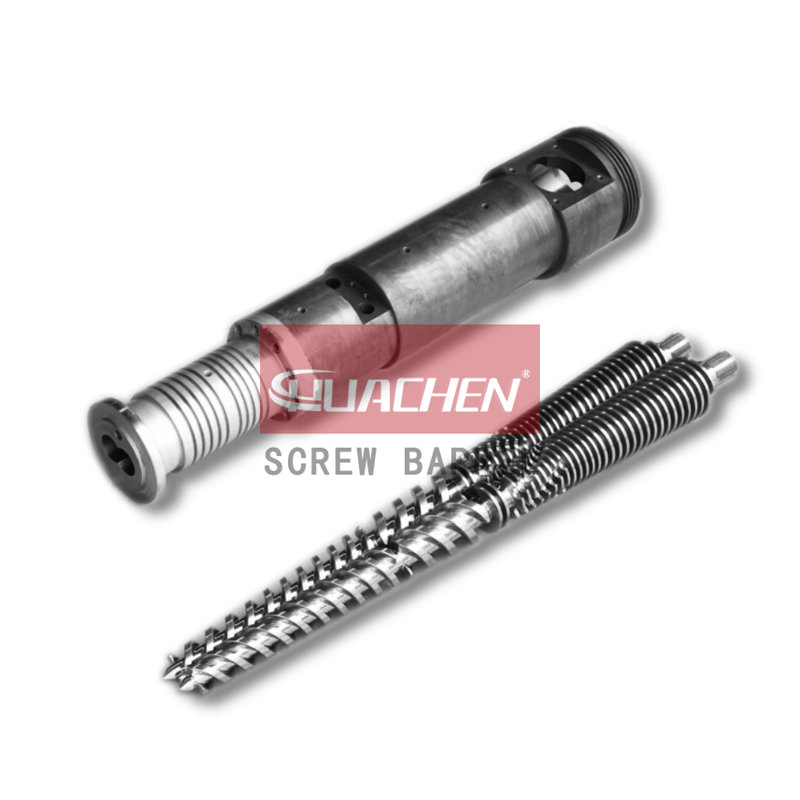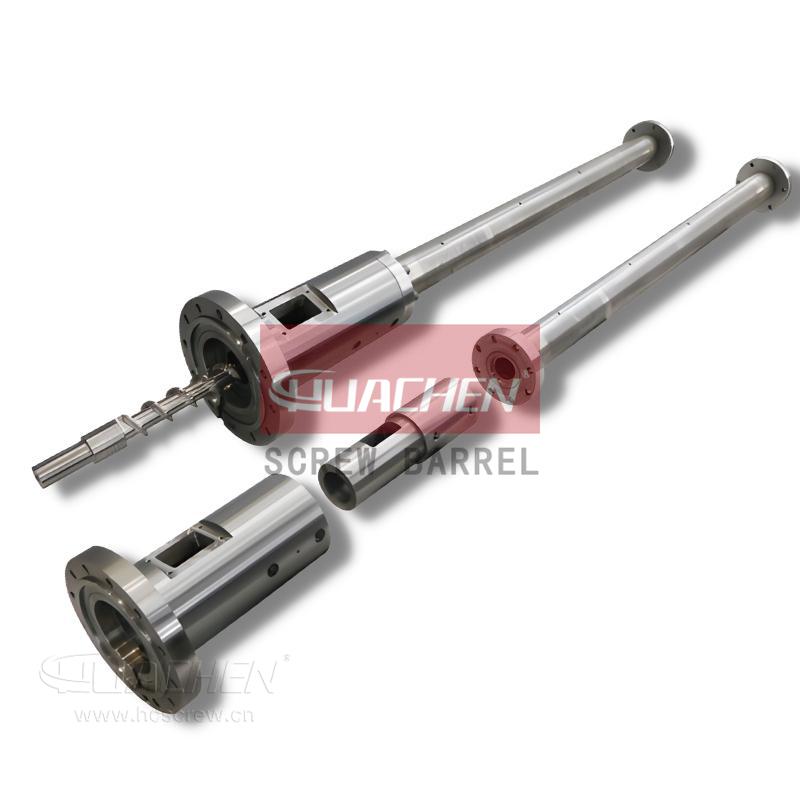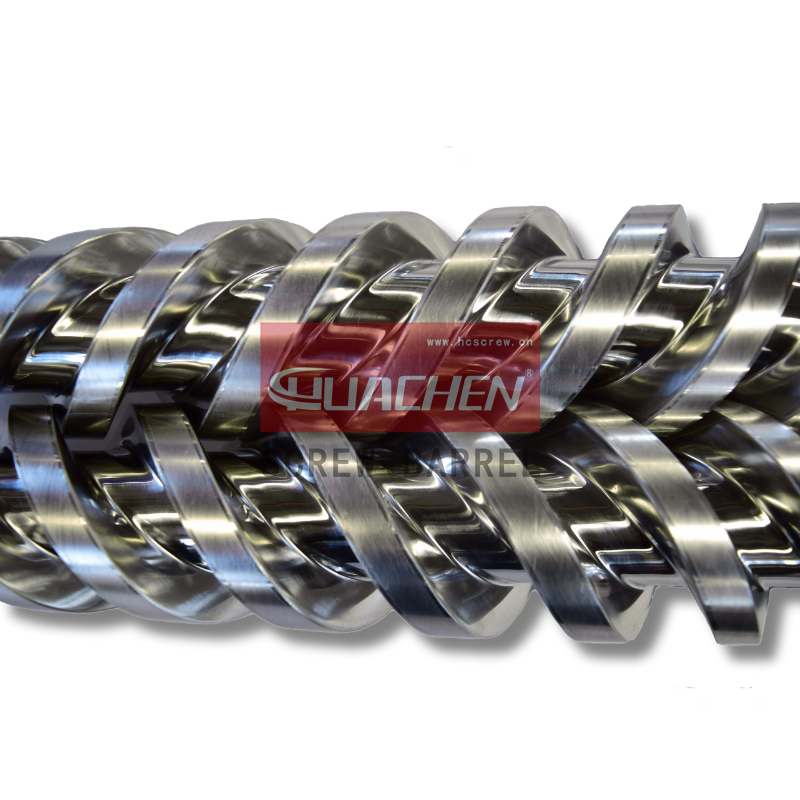Introduce PA Nylon: Melting Temperature, And Processing Methods
Date:2022-5-19 Author:hcscrew
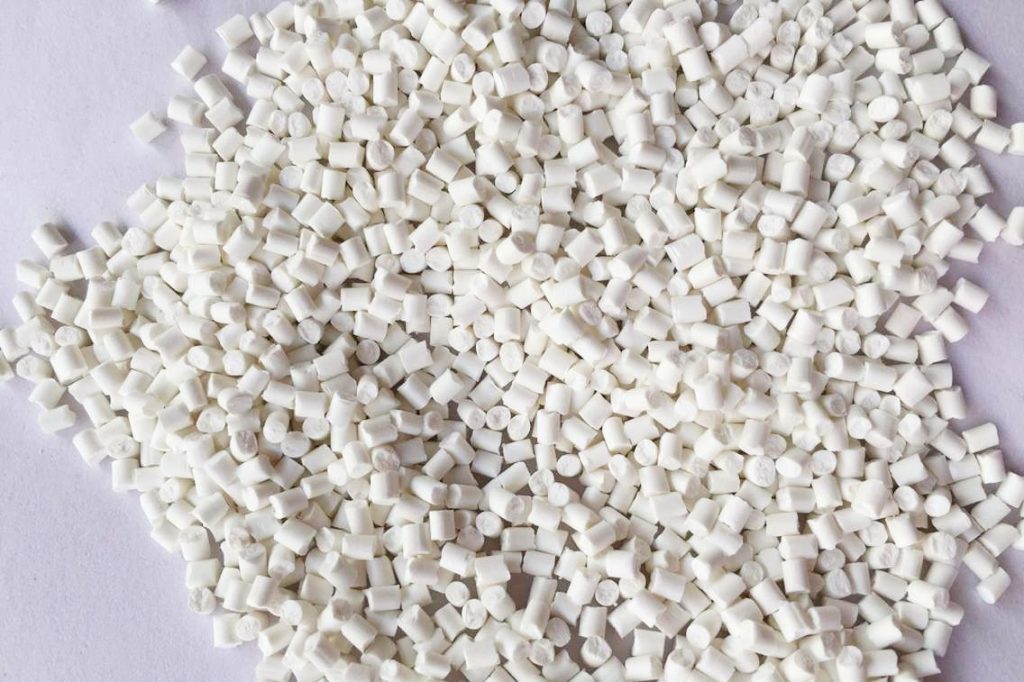
What is POLYAMIDE (NYLONS)?
Nylon is the general term for all long-chain nylon polyamides containing recurrent amide groups, and it is the biggest family of technical polymers with several applications.
They are tough, rigid and have good heat resistance but all absorb water. There is a wide range of different grades identified by a numerical suffix, i.e., PA6, PA66, PA46, PA11 and PA12. In the series of pThey are robust, stiff, and heat resistant, yet they all absorb water. There are several distinct classes, each identifiable by a number suffix, such as PA6, PA66, PA46, PA11, and PA12. The number in the polyamide series refers to the number of carbon atoms between the amide functional groups (NH). Lower numbers indicate that the chain has more functional groups that create strong hydrogen bonds, resulting in a higher melting temperature. Although the basic structure of the materials is same, the characteristics differ depending on the grade.
Moisture absorption reduces when polarity decreases due to broader spacing and less regular positioning of the strongly polar amide groups. The resistance to heat deformation is decreased because the methyl unit sections of the main chain are more flexible and movable.
Polyamide 6 (PA6) and Polyamide 66 (PA66) are by far the most used polyamide globally in many different markets and applications due to their very good performance to cost ratios. When reinforced with glass fibres (short or long), their stiffness can compete with metals.
Nylons can be easily processed. Decorating mouldings might include plating, painting, vacuum metallization, hot foil stamping, silk screen printing, and laser printing. To join components, ultrasonic welding and a two-part epoxy adhesive can be used.
1) Polyamide 6 (nylon 6):
Nylon 6 is made up of only one ingredient, caprolactam, which has six carbon atoms. Nylon 6’s crystal structure consists of parallel chains with hydrogen bonds between them, resulting in a more open structure with less internal hydrogen bonding.
Density 1.12-1.14 g/cm3
Glass transition temperature 47 ℃
Max/Min continuous Service temperature 80-120 ℃/-40 to-20 ℃
Melting temperature 210-220 ℃
It is strongly advised to dry the product before processing at temperatures ranging from 80 to 110 °C until the moisture content is less than 0.2 %. PA6 is thermally stable, but when decomposed, it mostly produces carbon monoxide, ammonia, and caprolactam.
Injection Moulding: It is recommended that the screw L/D ratio be 18–22. Melt temperature: 240–270 °C. Mould temperature: 55-80 °C
Extrusion: Extrusion can only treat very viscous grades. It is advisable to use a three-section screw with an L/D ratio of 20–30. The processing temperature is 240–270 °C.
Nylon 6 is a tough, abrasion-resistant material. PA 6 exhibits compared to PA66 exhibit better processablity, better hydrolytic stability, slightly lower cost, excellent surface appearance, creep resistance and better long term heat aging, slightly lower HDT and similar stiffness at temperature below 180°C. It also can be moulded with less mould shrinkage because it is slightly less crystalline.
Adversely, nylon 6 has a lower modulus and absorbs moisture more rapidly than nylon 66. Moisture acts as a plasticizer, reducing tensile strength and stiffness and increasing elongation but it increases its toughness, but this does affect dimensional tolerances.
Strengths: Self-lubricating, High strength and stiffness at high temperature, good impact strength, even at low temperature, very good flow for easy processing, good abrasion and wear resistance, excellent fuel and oil resistance, good fatigue resistance, Good electrical insulating properties
Limitations: High water absorption weakens electrical and mechanical qualities, necessitating UV stabilisation, high mould shrinkage, and low dimensional stability, as well as being affected by strong acids, bases, and oxidising agents. Before processing, it is necessary to pre-dry the material. Exceptional notch sensitivity
Applications: largely used in the textile industry to make textiles, ropes, threads, nets, and garments; toothbrush bristles; medical sutures; and classical musical instrument strings automotive industry for under-the-hood parts, power tool housings, food packaging films (mono or multi-layer), cable ties, zips, nuts and bolts, pump housings, laboratory equipment.
2) Polyamide 66 (Nylon 66):
Nylon 66 is composed of two monomers, adipic acid and hexamethylenediamine. Each monomer has six carbon atoms. Nylon 6.6 has stronger, shorter hydrogen bonds than nylon 6, resulting in a tighter, denser polymer structure that is tougher and more heat resistant than nylon 6.
Density 1.13-1.15 g/cm3
Glass transition temperature 54 – 58 ℃
Max/Min continuous Service temperature 80-140 ℃/-80 to -65 ℃
Melting temperature 255 – 265 ℃
Drying before processing is strongly advised at temperatures ranging from 80 to 110 °C if the moisture content exceeds 0.2 %. For Injection Moulding: Melting temperature is 270-300 °C, while mould temperature is 55-80 °C.
Extrusion temperatures between 270 and 290 °C are only suitable for very viscous grades.
Nylon 66 is a versatile engineering thermoplastic with a great blend of strength, ductility, and heat resistance, making it an excellent contender for metal replacement applications. Because nylon 66 is more crystalline and organised, it has stronger resilience/recovery after compression, a higher melting point, excellent ductility, and slower permeability. Its surface is about 12% tougher and 20% more robust than Nylon 6. Nylon 66 has a very wide process window, allowing it to be utilised for everything from intricate, thin-walled components to huge, thick-walled housings. They are easily customizable by adding fillers, fibres, internal lubricants, and impact modifiers. The introduction of fibre reinforcements can increase physical strength five times and stiffness up to ten times that of the basic resin. The ductility of nylon 66 is equivalent to that of polycarbonate when impact modifiers are used.
Strengths: High temperature strength and stiffness, self-lubricating, strong impact strength even at low temperatures (better than PA 6), extremely good flow for simple processing Excellent abrasion and wear resistance, Excellent resistance to gasoline and oil, as well as fatigue resistance Excellent electrical insulating characteristics.
Limitations: High water absorption reduces electrical and mechanical characteristics, necessitates UV stabilisation, high mould shrinkage, low dimensional stability, and is vulnerable to strong acids, bases, and oxidising agents. Because of its low viscosity, PA 6 requires pre-drying before processing, making it more difficult to process. Exceptional notch sensitivity
Applications: carpets, tyre ropes, brushes, broom bristles, filters, industrial gear, slide, cams and wheels, friction bearings and plug parts, radiator grilles, air intake manifolds, engine covers, relay boxes, electrical circuit breakers, contactors, connectors, coil formers, card guides, terminal blocks, low voltage switch gear Airbag containers, stadium chairs, photovoltaic connections, cordless hammer drills, washing machine control modules, Doorknobs, etc. Tubes for protecting wires and cables, cable ducts, packing films, furniture fittings, and medical items.
3) Polyamide 4.6 (Nylon 4.6):
Is a semi-crystalline aliphatic polyamide having the highest amide group density, therefore the highest melting point of all commercial polyamides available? It also has a very high crystallinity (70%), which keeps the Young’s Modulus very high up to temperatures close to the melting point. This makes PA 4.6 ideal for applications Where components experience (occasionally) very high temperatures, such as in automotive parts close to the engine or in electronics, where (lead-free) soldering requires extreme temperature resistance.
Density 1.18 g/cm3
Glass Transition Temperature (Tg) 78 ℃
Melting point Tm 295 ℃
Processed by extrusion and injection moulding methods
PA 4.6 is white opaque with glossy surface with high stiffness and strength when dry, but much lower when moisture conditioned. At higher temperatures there is little difference between dry and conditioned, shows low coefficient of friction, high level of toughness and wear resistance. Its HDT at 1.8MPA is 160 ℃, and 285 ℃ when filled with 30% of glass fibers.
PA 4.6 has superior mechanical resistance and fatigue resistance compared to that of PA66.
Strength: often used to replace metal in demanding high temperature applications, excellent tribological behavior, have high fluidity so is a good solution for complex shapes and parts with thin walls and extremely short cycle times are possible.
Limitations: high water absorption, less resistant to strong acids and bases, drying before processing required.
Applications: (miniature) connectors, sockets for memory modules and processors, LED’s, (miniature) printed circuit boards, electronics and automotive: lighting components, turbocharger inlet/intercooler, gears, industrial transmission components, sensor encapsulation, films, fibers for belts, aerospace turbine engine components, connectors.
4) Polyamide 11(Nylon 11):
Semi-crystalline aliphatic polyamide with excellent chemical resistance. Because it has fewer amide groups in the chain than the most popular nylons (PA6 and PA66), moisture absorption is minimal. This indicates that the environment has little impact on the mechanical qualities and dimensions. Castor oil is used to make PA11.
Density 1.03 g/cm3
Glass Transition Temperature (Tg) 45℃
Melting point Tm 180-189 ℃
Max/Min continuous service temperature 125 ℃/-45 ℃
Pre-drying time is 4-6 hours at 80-100 °C.
Processing by conventional extrusion, blow moulding, injection moulding and rotomoulding.
PA 11 is white opaque with a glossy surface. It has low stiffness, high toughness, and ductility, and may be used throughout a large temperature range while remaining ductile at extremely low temperatures. Excellent resistance to oil, gasoline, and hydraulic fluids. Other polyamides are less resistant to diluted acids and bases.
Higher fibre content grades Young’s Modulus and plasticized grades for flexibility are offered. Due to its relatively expensive cost, PA11 is mostly employed in high-demand applications requiring exceptional chemical resistance to hydrocarbons and low permeability.
Applications: Industrial pneumatic and hydraulic hoses, filters (fibers), aerospace cable sheathing, oil tanks, electronic connectors, housings, clips, oil and gas industry for flexible (offshore) flow lines, flexible liners, umbilical lines and cables, pipes, fittings, valves, medical catheters, solution bags, food and beverage tubes, medical equipment, sports components for rackets, shoe soles, skies (top layer).
5) Polyamide 12(Nylon 12):
Is a semi-crystalline, white colored opaque aliphatic polyamide with a glossy surface. It has low moisture uptake and very high chemical resistance. Similar to Nylon 11 it has much less amide groups than PA6 and PA66, which causes the Young’s Modulus to be lower, but it is much less affected by moisture from the environment. PA12 is very ductile and have very high impact resistance even at low temperatures, has low coefficient of friction and high wear resistance.
Density 1.02 g/cm3
Melting point Tm 175-180 ℃
Material must be pre-dried. Injection moulding, extrusion, and blow moulding procedures are used to produce this product. PA12 is also utilised in powder form in selective laser sintering (SLS), a quick production technology, and as a powder coating for metals.
PA 12 has very good resistance against greases, oil, fuels, hydraulic fluids and many solvents. More resistant to diluted acids and bases than other polyamides.
Nylon 12 has a lower modulus, greater elongation, lower strength, lower thermal distortion temperature, lower hardness, and lower melting point than Nylon 66, however it is more expensive. Nylon 12 absorbs half the amount of water as Nylon 66. Thus, while the qualities of Nylon 12 may not be as good as those of Nylon 66 under dry circumstances, they will be far more consistent when utilised in applications where water may be present.
Applications: automotive and industrial hoses, connectors, tanks for fuel, brake and cooling liquids, electronic connectors, aerospace hydraulic and air-conditioning hoses, medical equipment, communications and sports industry.
6) Polyphtalamide (PPA):
Polyphtalamide is an aromatic semi-crystalline polyamide (nylon) comprised of a diacid and a diamine. They are polyamides containing aromatic rings in their backbones, which gives them high mechanical strength and thermal resistance.
Polyphthalamides have many advantages over traditional polyamide nylons like improved chemical resistance, higher thermal capabilities, low moisture absorbance, stiffness and creep resistant.
Density 1.11-1.2g/cm3
Drying is recommended for 4 hours at 110 ℃. Injection Moulding process temperature of 320-345 ℃ and mould temperature of 80-120°C is recommended.
Strengths: excellent retention of performances in a wide range of conditions, high stifness and strength, low friction, dimensional stability, improved solvent and hydrolysis resistance compared to PA 66, good creep and chemical resistance, good electrical properties, good fatigue resistance, resist infrared soldering environments, used to replace metals in chemical, automotive and high temperature applications.
Limitations: requires high processing temperatures (up to 350 ℃), requires good drying equipment, not inherently flame retardant, attacked by powerful oxidants, mineral acids, acetic acid and formic acid
Applications: housing for high temperature electrical connectors, used in cutlery, automotive under the hood parts like engine cover, heater valve, fuel line connectors and coolant pumps, fuse, bushings and bearing pads in aircraft engines, medical catheters tubing, surgical trays, water heater manifolds, thermostat housing, air coolers, electronic LEDs, cable wire protection, connectors, halogen light housing, insulation foam, gas separation and water filtration membranes, gas pipes, sports equipment, mfg. of electronic components via soldering process without lead, in appliance for microwave, coffee machine, toaster.
In conclusion, understanding the melting point of PA Nylon plastic can help us to design and optimize the PA extruder screw barrel structure, as well as help extruder users reasonably choose a quality barrel screw.
Quote or contact us at HUACHEN Screw Barrel to speak to our expert team about the melting points of PA Nylon plastics processed by extruder screws.
TAGS
HUACHEN Screw barrel recent post
- High-performance PVC Screw Barrel for Efficient Extrusion
- Durable Conical Twin Screw Barrel for Precision PVC Pipe Production
- High-Speed Screw Barrel for Increased Extrusion Efficiency
- Super Wear-Resistant Bimetallic Alloy Coating Screw Barrel for High Output Extruders
- High-Precision Parallel Twin Screw Barrel for Extrusion Excellence
- Top Quality Single Screw Barrels for Plastic Extrusion Applications
- High-quality Extruder Screw Barrel for Reliable Performance
- Efficient Plastic Extrusion Screw Barrel for Superior Output
conical twin screw barrel extruder screw barrel extrusion screw barrel Foam sheet processing high speed screw barrel HUACHEN SCREW news injection screw barrel parallel twin screw barrel pa screw barrel pe making formula pe screw barrel plastic fiber processing plastic fibre screw barrel Plastic film making screw barrel plastic pipe processing Plastic profile processing Plastic raw material knowledge pp screw barrel PVC making formula pvc screw barrel related parts for screw barrel screw barrel engineering work screw barrel knowledge single screw barrel twin screw barrel
;